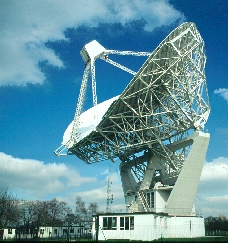The MKII Radio Telescope
In 1964 the second large fully steerable radio telescope was built at Jodrell Bank on the site of the 218ft Transit Telescope.
The MKII telescope, completed in 1964, was built to essentially the same design as the Goonhilly 1 telescope built to receive the first signals relayed by the Telstar satellite across the Atlantic. The parabolic reflecting surface had an elliptical outline to increase the collecting area over a circular aperture. It is approximatly 25m in diameter.
It was the first telescope of any type in the world to be controlled by a digital computer, the Ferranti Argus 100. This was one of the very first computers designed for real time control and built using germanium transistor logic and a ferrite core store. The storage capacity was initially 12 Kbytes! Highly optimised code was used to carry out the co-ordinate transformations required in the control software.
In 1971 the Argus 100 was upgraded to an Argus 400 computer which was also capable of carrying out the data acquisition tasks for the telescope's observing programs.
In the 1970's it was much used in the development of phase stable long baseline interferometers in conjunction with the MKIII telescope near Nantwitch. This work led to the development of the MTRLI and then MERLIN arrays of which it is an integral part.
In 1987 new aluminium panels were mounted on the original steel surface. These were built in a collaborative project between Jodrell Bank and Racal Antennas and had an rms surface accuracy of around 1/3 mm. The panels were set to a similar accuracy using a holographic technique, and the result is a telescope which can observe at the 22GHz MERLIN frequency.
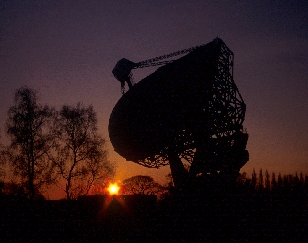
|
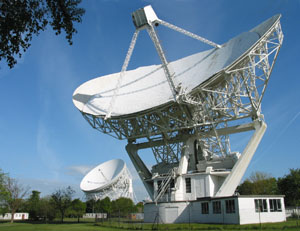
|
||
| The MKII Radio Telescope. Photos by Ian Morison. | |||
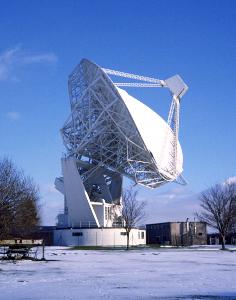
|
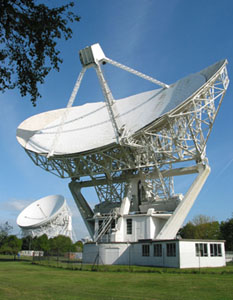
|
||
| The MKII Radio Telescope. Photos by Ian Morison. | |||

